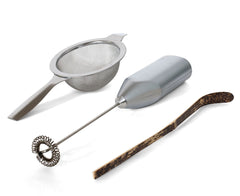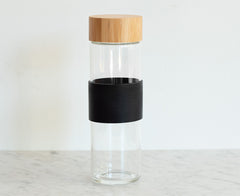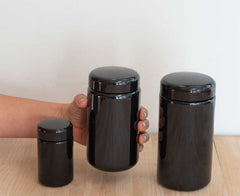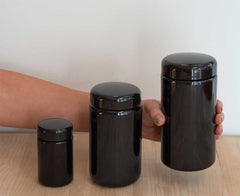cancer-prevention
Recent Research Papers on
cancer-prevention
Authors: E.B. Peixoto and A. Papadimitriou and D.A.T. Teixeira and C. Montemurro and D.A. Duarte and K.C. Silva and P.P. Joazeiro and J.M. Lopes de Faria and J.B. Lopes de Faria
In diabetes mellitus (DM), podocyte apoptosis leads to albuminuria and nephropathy progression. Low-density lipoprotein receptor-related protein 6 (LRP6) is WNT pathway receptor that is involved in podocyte death, adhesion and motility. Glycogen synthase kinase 3 (GSK3) interaction with p53 (GSK3-p53) promotes apoptosis in carcinoma cells. It is unknown if GSK3-p53 contributes to podocyte apoptosis in DM. In experimental DM, green tea (GT) reduces albuminuria by an unknown mechanism. In the present study we assessed the role of the GSK3β-p53 in podocyte apoptosis and the effects of GT on these abnormalities. In diabetic spontaneously hypertensive rats (SHR), GT prevents podocyte`s p-LRP6 expression reduction, increased GSK3β-p53, and high p53 levels. In diabetic \{SHR\} rats, GT reduces podocyte apoptosis, foot process effacement and albuminuria. In immortalized mouse podocytes (iMPs), high glucose (HG), silencing RNA (siRNA), or blocking LRP6 (DKK-1) reduced p-LRP6 expression, leading to high GSK3β-p53, p53 expression, apoptosis, and increased albumin influx. GSK3β blockade by BIO reduced GSK3β-p53 and podocyte apoptosis. In iMPs under HG, GT reduced apoptosis and the albumin influx by blocking GSK3β-p53 following the rise in p-LRP6 expression. These effects of GT were prevented by LRP6 siRNA or DKK-1. In conclusion, in DM, WNT inhibition, via LRP6, increases GSK3β-p53 and podocyte apoptosis. Maneuvers that inactivate GSK3β-p53, such as GT, may be renoprotective in DM.
Authors: Narumol Matan and Kanockwan Puangjinda and Saifon Phothisuwan and Mudtorlep Nisoa
The objective of this research was to observe the combined effect of green tea extract (at a tea: water; g ml−1, ratio of 2.5–10.0%) and cold plasma (20 W and 40 W) against bacteria pathogens (Escherichia coli, Salmonella typhimurium, and Listeria monocytogenes) that can be found on the fresh-cut dragon fruit. The change in pathogens after plasma treatment of a fresh-cut dragon fruit treated with green tea at 4 ± 1 °C was also investigated. Dragon fruit's nutritional value, mineral, total phenolic content, and sensory within and without plasma and green tea was determined. It was found that atmospheric radio-frequency (RF) plasma at 40 W could extend the protection against all pathogen growth on the surface of fresh-cut dragon fruit treated with at a 5.0% of green tea to at least 15 days. Without the plasma treatment, green tea of 2.5–10.0% could not inhibit all bacterial growth. In addition, higher values of total phenolic content, crude protein, crude fat and crude fibre were observed in the fresh-cut dragon fruit with green tea after the plasma (p < 0.05) treatment; however, no change was found (p > 0.05) regarding the minerals Fe, Cu, and Mn and the sensory test. The research indicated that green tea extract and atmospheric \{RF\} plasma in combination could protect against the growth of pathogens on fresh-cut dragon fruit and extend its shelf-life.
Authors: G.B. Fanaro and N.M.A. Hassimotto and D.H.M. Bastos and A.L.C.H. Villavicencio
The aim of this paper is to study the effect of gamma radiation on green tea irradiated with different water activities. The green tea samples had their Aw adjusted to three values (0.93, 0.65, and 0.17) and were irradiated in 60Co source at doses of 0, 1.0, 1.5, 2.0, 2.5, 5.0, 7.5, and 10.0 kGy. The methods used were: microbiology, total phenolic compounds quantification, antioxidant activity by ORAC, and quantification of the main antioxidants. It was observed that the greater the amount of free water present in the samples, lower was the dose to achieve microbiological control. Despite the irradiation with 5.0 kGy with high water activity has a small decrease in phenolic compounds and in some catechins content, this condition is recommended once was the dose to ensure microbiological safety without interfering in the main catechins and the antioxidant activity.
Authors: Virginia Muriel-Galet and Marlene J. Cran and Stephen W. Bigger and Pilar Hernández-Muñoz and Rafael Gavara
Polymer films with antioxidant and antimicrobial properties were manufactured for the active packaging of food products. Green tea extract (GTE) and oregano essential oil (OEO) were incorporated in an ethylene–vinyl alcohol copolymer (EVOH). Release studies of the main active components of the films into three food simulants, 3% acetic acid, 10% ethanol and 50% ethanol, were conducted at 4 °C and 23 °C. The total antioxidant activity at equilibrium was measured in the food simulants and the antimicrobial capacity of the films was tested in vitro against Listeria monocytogenes, Escherichia coli and Penicillium expansum. The results suggest that the release kinetics depend on the affinity between the active agents and the food simulants. In general, the fastest diffusion was obtained when films were exposed to 50% ethanol and that effect was concurrent with greater antioxidant efficiencies. The films also showed microbial growth inhibition in liquid media and in vapour phases, demonstrating that the developed films show strong potential for development as active food packaging films.
Authors: Morgan Murray and Chelsey Walchuk and Miyoung Suh and Peter J. Jones
"Green tea (Camellia sinensis) is an ancient beverage stemming from China more recently gaining interest in Western societies due to its antioxidant capacity. Cardiovascular disease (CVD) a disease of the heart and blood vessels is a result of increased lipid concentrations and blood pressure responsible for numerous deaths worldwide. Green tea is highly enriched in catechins which may be responsible for its proposed \{CVD\} prevention mechanism. The objective of this paper was to examine the scientific evidence pertaining to green tea and \{CVD\} risk and evaluate whether enough credible scientific evidence exists to support a health claim by the United States Food and Drug Administration (US FDA). Sixteen clinical studies have examined the effects of green tea on \{CVD\} risk factors however following a critical evaluation of these studies a health claim cannot be recommended due to the safety and metabolites of green tea as well due to lack of high quality and properly designed studies."
As far as we know, there is no place on the internet that collects and organizes scientific and medical studies on the efficacy and health benefits of matcha and green tea.
So we decided to build our own database of articles we found to be useful. We hope you find them useful, too.
Just search for any term . . . green tea, health benefits, cancer, liver, EGCG, polyphenols . . . anything at all.
Author: Ecem Evrim Çelik and Vural Gökmen
This work investigates the possibility of interaction between insoluble dietary fiber bound antioxidants, specifically of wheat bran, and soluble antioxidants like those provide by aqueous infusions of green tea. Solutions of pure catechins were also assayed for comparison with those naturally found in tea. To accomplish this, the aqueous and alcohol soluble fractions as well as the lipid components of wheat bran were firstly removed and the freeze-dried insoluble residue was then treated with different concentrations of green tea infusions or aqueous solutions of epicatechin (EC) and epigallocatechin-3-gallate (EGCG) for certain time. Treatment with EC (0–200 μM) had no significant effect on the antioxidant capacity of insoluble bran fraction. However, treatment with EGCG significantly (p < 0.05) increased linearly the antioxidant capacity as a function of concentration (0–100 μM). Treatment with great tea infusions (1–3 g/100 ml) also increased the resulting antioxidant capacity of insoluble bran fraction, but the effect was lesser at higher infusion concentrations. Liquid chromatography couple to mass spectrometry (LC–MS) analyses of aqueous phases after treatment indicated comparable levels of decrease in the concentrations of catechins confirming their reaction with the radical forms of antioxidants bound to insoluble bran matrix.
Author: Mike H. Pillukat and Carolin Bester and Andreas Hensel and Matthias Lechtenberg and Frank Petereit and Susanne Beckebaum and Klaus-Michael Müller and Hartmut H.J. Schmidt
Etnopharmacological Relevance: The popularity of concentrated green tea extracts as dietary supplements for a wide range of applications is increasing due to their health-promoting effects attributed to the high amounts of catechins they contain. The most important of the green tea catechins is (−)-epigallocatechin-3-O-gallate (EGCG). While their beneficiary effects have been studied extensively, a small number of adverse events have been reported in the medical literature. Here we present a typical reversible course of severe hepatitis after green tea consumption. Materials and methods The case study describes in a 63-year old woman during treatment with green tea-capsules upon recommendation of a cancer support group. Results The histological finding was consistent with drug induced hepatitis, and other possible causes of hepatitis were excluded. According to the CIOMS/RUCAM score the causality was assessed as “probable”. After discontinuation of medication, followed by extracorporal albumin dialysis, rapid and sustained recovery occurred. Pharmaceutically analysis (HPLC) of the green tea capsules did not give evidence for contaminants but revealed the two typical compounds of green tea, namely (−)-epigallocatechin-3-O-gallate (EGCG, 93.2%) and epicatechin (EC, 6.8%) at a very high dose level. Conclusion The present case highlights the fact that such concentrated herbal extracts from green tea may not be free of adverse effects under certain circumstances. There is still a lack of a uniform European Union-wide surveillance system for adverse drug reactions of herbal products. Therefore this case underlines the importance of public awareness in the potential risks in use of herbal products.
Author: Keiko Narumi and Jun-Ichiro Sonoda and Keita Shiotani and Michihiro Shigeru and Masayuki Shibata and Akio Kawachi and Erisa Tomishige and Keizo Sato and Toshiro Motoya
We developed an analytical method for the simultaneous determination of tea catechins and gallic acid (GA) in human serum using ion-pair high-performance liquid chromatography (HPLC) with electrochemical detection. GA was measured to estimate the amount of gallate moiety produced by degradation of gallated catechins ((−)-epicatechin-3-gallate, ECG; (−)-epigallocatechin-3-gallate, EGCG). Ethyl gallate was adopted as an internal standard to correct for the extraction efficiency. To maximize extraction efficiency, a hydrophobic polytetrafluoroethylene (PTFE) filter was selected for pre-treatment prior to separation. HPLC separation was performed using a C18 reversed-phase column with a gradient mobile phase of phosphate buffer (pH 2.5) containing tetrahexylammonium hydrogensulfate as an ion-pair reagent. Using this method, (−)-epicatechin (EC), (−)-epigallocatechin (EGC), ECG, EGCG, ethyl gallate, and GA were detected as single peaks. The resolution values for target analytes were 4.0–13.0 and the mean values of the absolute recoveries of catechins and GA were 77.3–93.9%. The detection limits for catechins and GA in serum were 0.4–3.1 ng/mL. The serum catechin levels of eight healthy volunteers after ingestion of a single dose of green tea tablets were measured using this method. The concentration of total catechins (free + conjugated forms) in serum peaked 60 min after ingestion. From these results, this method is thought to enable the simultaneous quantification of GA, the hydrolysis product of gallated catechins, and target catechins, and to be sufficiently sensitive for pharmacokinetic studies of catechins following oral administration of green tea.
Author: Hae-Suk Kim and Michael J. Quon and Jeong-a Kim
Green tea is rich in polyphenol flavonoids including catechins. Epigallocatechin 3-gallate (EGCG) is the most abundant and potent green tea catechin. EGCG has been extensively studied for its beneficial health effects as a nutriceutical agent. Based upon its chemical structure, EGCG is often classified as an antioxidant. However, treatment of cells with EGCG results in production of hydrogen peroxide and hydroxyl radicals in the presence of Fe (III). Thus, EGCG functions as a pro-oxidant in some cellular contexts. Recent investigations have revealed many other direct actions of EGCG that are independent from anti-oxidative mechanisms. In this review, we discuss these novel molecular mechanisms of action for EGCG. In particular, EGCG directly interacts with proteins and phospholipids in the plasma membrane and regulates signal transduction pathways, transcription factors, DNA methylation, mitochondrial function, and autophagy to exert many of its beneficial biological actions.







